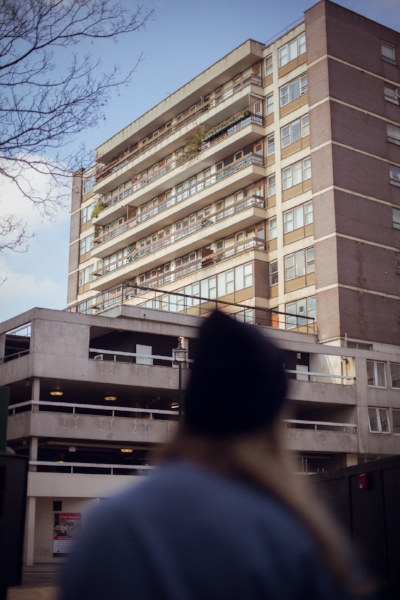White Balance (Temp & Tint):
Depending on your camera settings, when you take a photograph the camera will decide the white balance of the photo. When shooting with different types of lights or weather the white balance will vary. For example, shooting indoors with Tungsten lights the photos will come out warmer. To ensure correct white balance in this situation, you will have to make the photo cooler by dragging the slider to the left (to a lower kelvin), or use some of Adobe Lightroom's built-in Presets.
The tint is similar to the temp setting, it enables you to tweak the colours even more by making the photo more green or purple.
To ensure the correct white balance easily, I recommend shooting with a grey card, then using the eye dropper tool and clicking on an area of the photo that's white or grey. If you don't have a grey card, you can photograph something that is white (e.g. a t-shirt) and use the eye dropper on that instead.
Exposure:
The exposure slider artificially changes the exposure to the photo. Similar to how your camera shoots, it will let you do fine adjustments by exposure stops. This tool is limited by your camera's capabilities and the file format. For example if I take a photo I've shot on my phone in JPEG format and increase the exposure, the quality won't be as great - artifacts will appear, and highlights will be blown out. As opposed to a RAW file from the D850, I will be able to increase or lower the exposure a lot more due to the manipulability of a RAW file and the dynamic range of the camera. Keep this in mind when shooting. Think about how much detail you can recover and adjust your shooting style to that.
Contrast:
The contrast slider determines how bright the bright areas of your photo are, and the shadows of the shadow areas. If you increase the contrast, it will make the bright areas brighter, and dark areas darker. If you decrease the contrast it makes the brighter areas darker, and the darker areas brighter - thus removing contrast. Lowering the contrast can be useful sometimes, for example if you're shooting with very harsh shadows, but bare in mind how far you go because you can end up with a washed out photo or you'll be losing a lot of detail.
Highlights & Whites:
This slider is similar to the contrast slider. The highlights & whites let you tweak the bright areas respectively, in a much more fine way. For example, you can bring back detail from the brightest areas of the photo by moving the highlight slider to the left. The whites slider sets the ‘white point’ - the true whites in a photo.
Shadows & Blacks:
Like the opposite of the highlights & whites sliders. You can bring back detail from the darkest areas of the photo by moving the shadows slider to the left. The blacks slider sets the ‘black point’ - the true blacks in a photo.
Clarity:
The clarity slider adds/removes detail into a photo, by affecting the midtones - as opposed to the contrast slider which affects highlights and shadows. I found it difficult to explain how it does what it does, so I'm going to quote a piece from Photographylife.com
"This tool mostly affects the transition between light and dark portions of the image (makes it less or more sudden, defined) and visibly alters the micro-contrast of the photograph. If changed extremely, it can also have a slight effect on the overall contrast of the image and shift the color somewhat. When set to a high setting it will make any shapes or forms more defined, starting with small, like skin imperfections, and ending with much bigger ones, like highlights in the background (the circles of bokeh)."
Vibrance:
The vibrance slider affects the colours in the photo. By moving the slider to the right, it will increase the vibrancy of the colours. The vibrance slider mainly affects muted colours, and not so much the saturated colours in the photo. If you were to move it all the way to the right, you may end up seeing colours that you didn't notice before. For example a white t-shirt might have a tiny shade of blue due to light reflecting from a wall. The vibrant colours from this slider is also affected by the white balance settings, so keep this in mind.
Saturation:
The saturation slider is fairly similar to the vibrance slider. Except it affects all the colours in the photo, not just the muted colours. Be careful not to overdo the saturation slider, else you'll end up with unrealistic colours, or extremely orange subjects.
All in all, these sliders might seem very basic, but every photographer should know or be using them. I recommend finding a photograph you love, and play about with the sliders (white balance, whites/blacks, etc) and try and replicate the effect. The more you use these tools, the more possibilities you can create with your photos.














